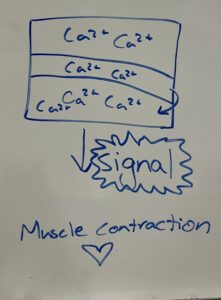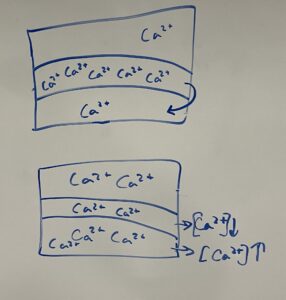Week 2- The Rough ER and Calcium’s Role in Heart Attacks
Anita M -
Much like the previous week, I have been studying human physiology and learning lots of cool fun stuff. For example, did you know that there is a high calcium concentration in the rough ER and a low calcium concentration in the cytosol. When Calcium ions move down that concentration gradient from the Rough ER and into the cytosol, it signals for muscle contraction. When the movement of calcium ions is disrupted in heart cells, it can contribute to problems with heart contraction and relaxation. Attached is a diagram explaining this concept with pictures.

For those who have experienced a lack of blood supply to the heart following a heart attack, or myocardial infarction reperfusion (MI/R), an overload of calcium occurs within heart cells. This disrupts up the calcium gradient, can lead to further inflammation of heart tissue and exacerbate the other adverse effects of MI/R, such as heart failure.
Currently, researchers are working on formulating medications and therapies that can more effectively inhibit calcium overload. Understanding the different roles the ER plays in relation to heart disease is vital to better understand how modifications to the ER (one of which, is ATF6 activation,) can help cure heart disease.
Next week, I will most likely still be sharing more fun facts with you guys until I can finally start my own experiments in the lab.



Comments:
All viewpoints are welcome but profane, threatening, disrespectful, or harassing comments will not be tolerated and are subject to moderation up to, and including, full deletion.